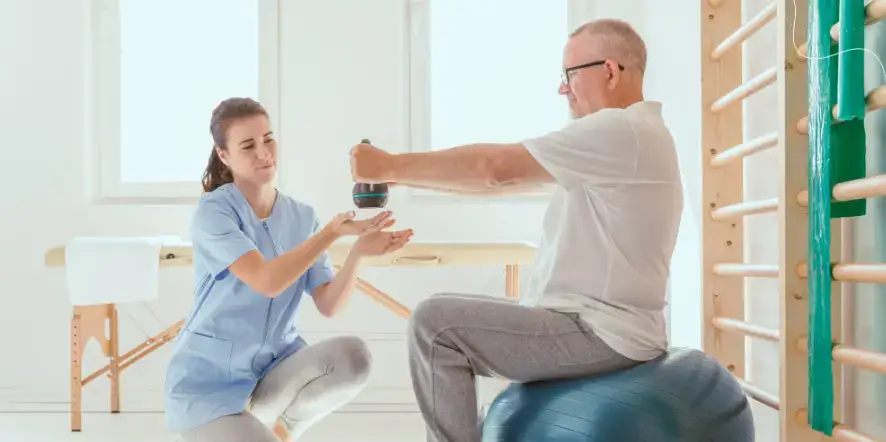Understanding the Different Stages of Stroke Recovery

Stroke recovery is a complicated process. Symptoms like flaccid paralysis and spasticity can be challenging but are signs of progress.
Understanding the stages of stroke recovery will help your loved one stay motivated to cooperate with therapies. The Brunnstrom model includes seven sets of recovery: flaccidity, spasticity appears, spasticity increases, complex movement combinations, synergy patterns in muscles and joints, and regular function returns.
Flaccidity
When someone is in the flaccid stages of stroke recovery, they can’t initiate voluntary movement on the affected side. Their muscles may feel limp or floppy and tighten involuntarily when prodded with a finger or other stimulus. These involuntary movements can be alarming, but they are a good sign that the brain is rebuilding muscle connections again.
At this point, it’s essential to continue with passive range of motion exercises and electrical stimulation to improve neural connections to help overcome flaccidity. Studies have shown that mental practice, which involves imagining the limb moving independently, can also promote neuroplasticity and improve outcomes in this stage of stroke recovery.
While the Brunnstrom stages are helpful, it’s important to remember that every person’s experience following a stroke is different. It’s also important to be patient, as regaining control of the muscles can take time. Keep up with your recovery, don’t give up, and you may be surprised at what milestones you can reach.
Hypotonia
In this stage, muscles do not have a healthy amount of contraction even when relaxed. They will tighten involuntarily when prodded but may still feel floppy and limp. Hypotonia is distinct from muscle weakness and can result from a stroke or an underlying condition like muscular dystrophy.
As you progress into this stage, spasticity will decrease, and movement patterns will become more coordinated. Your movements will still feel jerky, twitchy, and out of sync, but this is a big step forward. During this phase, your doctor or therapist will recommend stretching and strengthening exercises to improve your flexibility.
While many people move straight into this stage after a stroke, it is common to experience a period of backsliding when your symptoms worsen for a short time. For this reason, it’s essential to log your symptoms and when they started. It will help you and your team track your progress over time. It’s also a good idea to see more than one medical professional when you notice a change in your symptoms. They can diagnose you accurately and develop the best treatment plan. Having more than one opinion will also help you avoid getting caught up in the medical myths surrounding recovery from a stroke.
Involuntary Movements
During stage three, spasticity peaks, a condition in which the muscles in a person’s limb become abnormally tight and stiff. This condition results from damaged brain and spinal cord nerve pathways that control muscle movement. Involuntary movements such as jerking or uncoordinated movements may also start to appear. These movements are called tics or tremors, and specific stimuli, such as light touch or medications, can trigger them.
During this time, the person’s muscle movement improves, and involuntary movements are reduced. As the brain grows increasingly successful at transmitting signals to the muscles for regulated activity, a person can begin to do complex exercises, such as using silverware, writing, and walking.
The good news is that it’s at this point where improvements can be seen and celebrated. One way to do so is by keeping a recovery journal where you can write down all advances (or setbacks). Keeping a journal is a great way to see the minor, gradual improvements that need clarification. It’s also a great way to motivate yourself and your loved one to keep working on recovery. Another tool to consider is mirror therapy, which helps the brain recognize a person’s impaired limb better.
